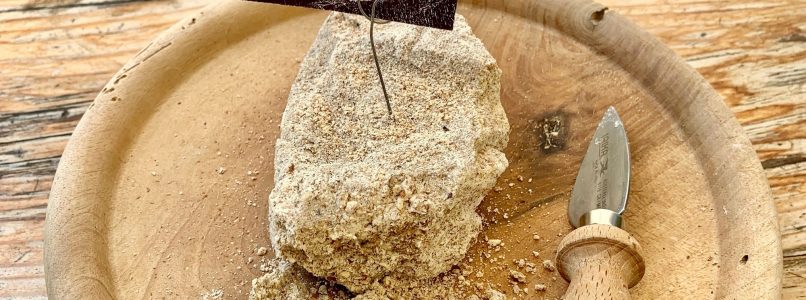The Quendoz company in Jovençan is managed by 2 under 30 (and their sister under 18), faces of the new Valle d'Aosta agricultural tradition
To be rock'n'roll you need special qualities. In music as in all aspects of life.
Brothers Quendoz, Vincent, Lydie and Genie, I'm absolutely rock'n'roll. They play the music of work, the hardest one, the complicated one to do if you are just over 20 or even under 18 (like Genie). They play the music of the work of farmers, in summer and autumn pastures and in the stable in winter and for most of the spring, because the Aosta Valley spring is not always kind to the temperatures.
The Quendoz farm
The image of the Quendoz s.s. they are the three of them, especially since dad Elio, a well-known and esteemed breeder and farmer from Jovençan, suddenly passed away and it was especially up to Vincent and Lydie to take over the reins of the family business.
Lydie studied in the hotel sector and entered the company little by little, following the administrative and commercial part; Vincent returns to Valle d'Aosta after his studies in France, in the agricultural and dairy sector, also because this work is not improvised, especially to create products like theirs, with a unique flavor, the result of the genius and courage that only young people they can have. Indeed, the company's flagship product was born from Vincent's knowledge: the Rebletzen.

The Rebletzen
Inspired by the French tradition, this cheese with a unique and unmistakable taste is produced exclusively by the Quendoz company, because it was born from Vincent's mind and knowledge. With a soft texture, it is excellent both on a cutting board and melted, the crust is edible and has shades ranging from white to gray, due to aging in ancient stone cellars.
In addition to the Rebletzen, the crowds of tourists in summer go as far as Vetan, in the municipality of Saint-Pierre, to go to the Chatelana pasture, at an altitude of 1850 meters, where Vincent and Lydie, following the ancient and beloved traditions that characterize Valle d'Aosta, in the summer months carry out the transhumance of cattle, moving from Jovençan to the mountain pastures. Here the cows have 180 hectares at their disposal to feed on fresh fodder every day, the secret of the Quendoz brothers' creations and also a little of Lydie's contagious smile.
In this mountain paradise Lydie welcomes those who come to buy the famous Fontina and who always leave also with a Rebletzen or a Quendina, a cheese similar to Fontina in terms of processing, but which hides aromatic herbs, spices or dried fruit, elements that give a particular flavor to the product; well-known and famous forms with chives, thyme, pepper, chilli, almonds and walnuts.

Breeding with love
The well-being of cows is one of the Quendoz mantras: the respect and love that brothers show for the heads of cattle is the same as when they talk about what their work has become, out of will and a sense of responsibility. , even if they are very young.
Everyone has specialized in a field: if Vincent is more at ease among the cauldrons, like a modern rennet scientist, Lydie has quickly become the face of the company and has begun to tell the world of Instagram everything that entails. being a young breeder. The days of the company are all told through the thequendoz_ account where, through the decisive and engaging attitude of the second child, the routine of the laboratory, the stable and the pasture appear in a completely different and certainly more modern light.
This is also rock'n'roll, but above all it is beautiful. As beautiful as the sincere commitment that these young and tenacious guys have decided to pursue, certainly depriving themselves of many things that are part of everyday life for their peers, but also finding their own path and building their own future. Lydie, Vincent and Genie are the new generation of Valle d'Aosta breeders who in the past have taken the best part, love and care for animals and tradition, but who in this very complicated present have found the courage and that bit of recklessness necessary for a future full of satisfaction.
Info: Pessolin hamlet, 24 Jovençan 11020 (AO)
azag.quendoz@libero.it
(+39) 349 5942098
